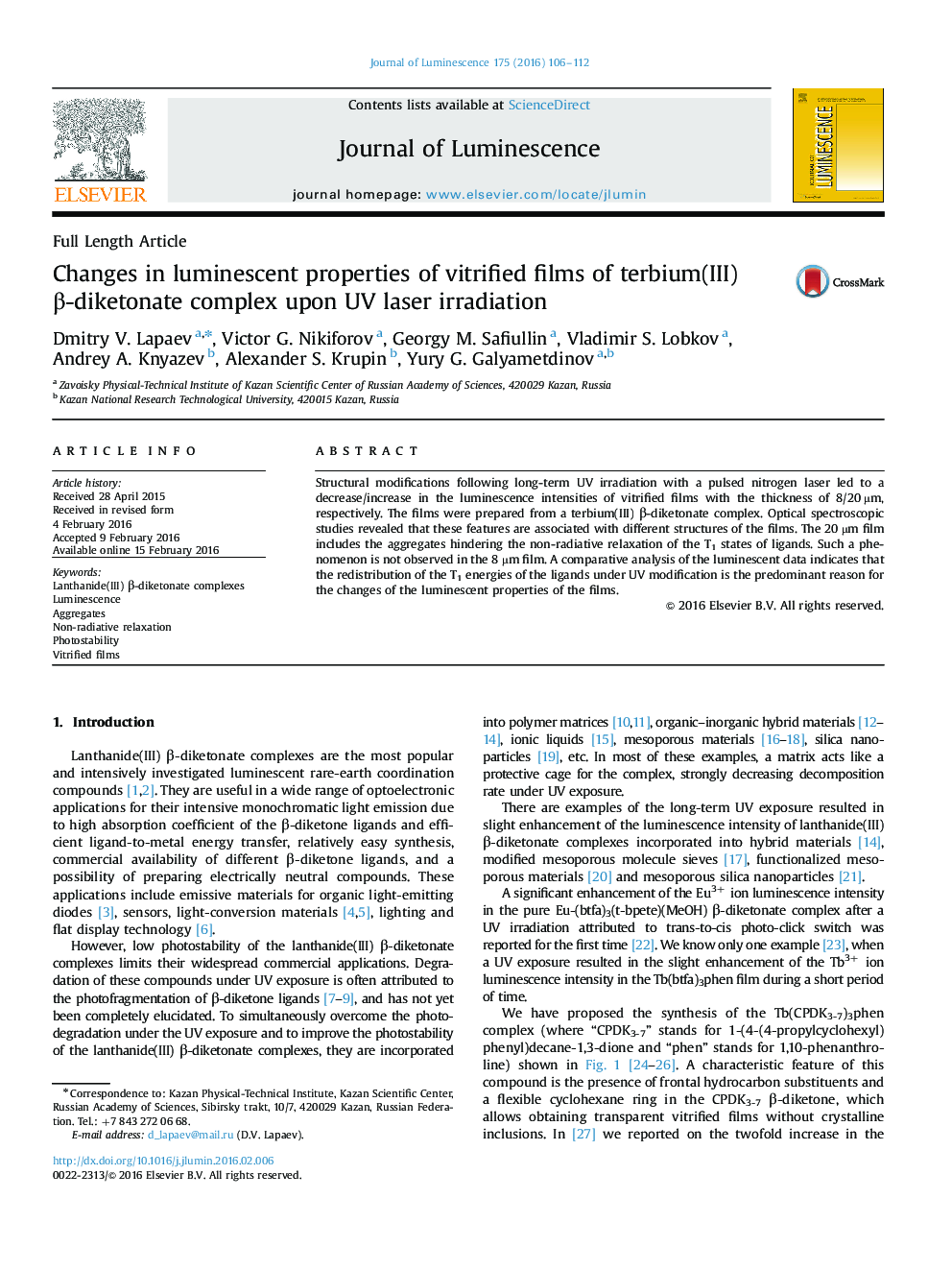| Article ID | Journal | Published Year | Pages | File Type |
|---|---|---|---|---|
| 5398197 | Journal of Luminescence | 2016 | 7 Pages |
Abstract
Structural modifications following long-term UV irradiation with a pulsed nitrogen laser led to a decrease/increase in the luminescence intensities of vitrified films with the thickness of 8/20 µm, respectively. The films were prepared from a terbium(III) β-diketonate complex. Optical spectroscopic studies revealed that these features are associated with different structures of the films. The 20 µm film includes the aggregates hindering the non-radiative relaxation of the T1 states of ligands. Such a phenomenon is not observed in the 8 µm film. A comparative analysis of the luminescent data indicates that the redistribution of the T1 energies of the ligands under UV modification is the predominant reason for the changes of the luminescent properties of the films.
Related Topics
Physical Sciences and Engineering
Chemistry
Physical and Theoretical Chemistry
Authors
Dmitry V. Lapaev, Victor G. Nikiforov, Georgy M. Safiullin, Vladimir S. Lobkov, Andrey A. Knyazev, Alexander S. Krupin, Yury G. Galyametdinov,
